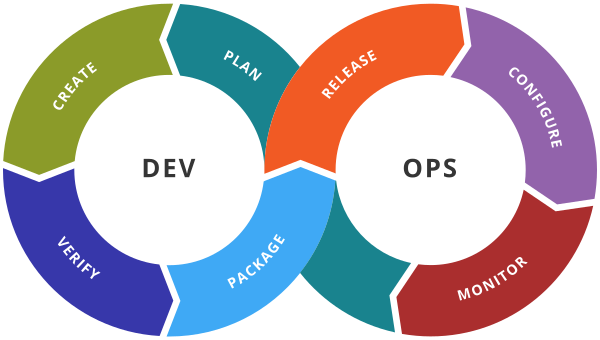SUBSCRIBE TO GET FULL ACCESS TO THE E-BOOKS FOR FREE 🎁SUBSCRIBE NOW
- HOME
- DevOps
- Azure DevOps
- Azure Certification Details
- SDLC & DevOps – Introduction
- Azure DevOps
- Azure Release Pipeline
- Azure DevOps Tools
- Azure Monitoring
- Azure ARM Templates
- Jenkins with Azure Repos
- Azure DevOps – Self-hosted agents
- Azure DevOps – Microsoft-hosted agents
- Azure DevOps – Azure pipeline using Github
- Azure DevOps-Azure Pipeline
- Azure DevOps – CICD Pipeline
- Azure Repo
- Git – Distributed Version Control System
- Azure Add AD Users
- Agile Terminology
- Azure Project Processes
- Azure DevOps Organization and Its Configuration
- Azure Projects
- Azure Active Directory Overview
- Azure DevOps- Add Users and Set Permissions
- Azure DevOps – Project Teams
- Azure Boards
- Azure Boards Lab
- Azure Sprint Lab
- Git – Distributed Version
- Aws Solution Architect Tutorials
- Aws Certified Solutions Architect
- Aws Cloud Computing
- AWS Fundamentals
- Aws History
- Aws Sign Up
- EC2
- AWS – IAM
- AWS – EBS
- Simple Storage Service- S3
- AWS- Cloud Front
- AWS – DyanmoDB
- AWS – Elastic Load Balancer
- AWS – Autoscaling and Launch
- Configuration
- AWS- SNS
- AWS – VPC Peering
- AWS – VPC
- AWS – Transit Gateway
- CloudWatch- Alarm and Logs
- AWS- SSM
- AWS- Lambda API Gateway
- AWS – RDS
- AWS – CloudFormation
- AWS- Beanstalk
- AWS – ECS
- AWS – EKS
- AWS – WAF
- Quizzes
- FAQ’s
- Terraform Tutorials
- Terraform – dynamic blocks
- Terraform – Locals
- Terraform -AWS Installation
- Terraform Autoscaling
- Terraform Blocks
- Terraform conditional statements
- Terraform DataSource
- Terraform DataSource
- Terraform ELB
- Terraform IAM
- Terraform Language Basics
- Terraform Loops (for, for each)
- Terraform Modules
- Terraform OverView
- Terraform providers resources
- Terraform Provisioner
- Terraform RDS
- Terraform state file on S3
- Terraform Variable and DataSource Example
- Terraform Variable and DataSource Example
- Terraform VPC
- Terraform VPC Without Module
- Terraform VpcModule
- Terraform Workflow
- Terraform Workspace
- Terraform- Variables
- Terraform-EBS Volume
- Test Your Installation
- Upgrading Kubernetes
- Linux Basics
SUBSCRIBE NOW TO GET FREE ACCESS TO EBOOKS

- HOME
- DevOps
- Azure DevOps
- Azure Certification Details
- SDLC & DevOps – Introduction
- Azure DevOps
- Azure Release Pipeline
- Azure DevOps Tools
- Azure Monitoring
- Azure ARM Templates
- Jenkins with Azure Repos
- Azure DevOps – Self-hosted agents
- Azure DevOps – Microsoft-hosted agents
- Azure DevOps – Azure pipeline using Github
- Azure DevOps-Azure Pipeline
- Azure DevOps – CICD Pipeline
- Azure Repo
- Git – Distributed Version Control System
- Azure Add AD Users
- Agile Terminology
- Azure Project Processes
- Azure DevOps Organization and Its Configuration
- Azure Projects
- Azure Active Directory Overview
- Azure DevOps- Add Users and Set Permissions
- Azure DevOps – Project Teams
- Azure Boards
- Azure Boards Lab
- Azure Sprint Lab
- Git – Distributed Version
- Aws Solution Architect Tutorials
- Aws Certified Solutions Architect
- Aws Cloud Computing
- AWS Fundamentals
- Aws History
- Aws Sign Up
- EC2
- AWS – IAM
- AWS – EBS
- Simple Storage Service- S3
- AWS- Cloud Front
- AWS – DyanmoDB
- AWS – Elastic Load Balancer
- AWS – Autoscaling and Launch
- Configuration
- AWS- SNS
- AWS – VPC Peering
- AWS – VPC
- AWS – Transit Gateway
- CloudWatch- Alarm and Logs
- AWS- SSM
- AWS- Lambda API Gateway
- AWS – RDS
- AWS – CloudFormation
- AWS- Beanstalk
- AWS – ECS
- AWS – EKS
- AWS – WAF
- Quizzes
- FAQ’s
- Terraform Tutorials
- Terraform – dynamic blocks
- Terraform – Locals
- Terraform -AWS Installation
- Terraform Autoscaling
- Terraform Blocks
- Terraform conditional statements
- Terraform DataSource
- Terraform DataSource
- Terraform ELB
- Terraform IAM
- Terraform Language Basics
- Terraform Loops (for, for each)
- Terraform Modules
- Terraform OverView
- Terraform providers resources
- Terraform Provisioner
- Terraform RDS
- Terraform state file on S3
- Terraform Variable and DataSource Example
- Terraform Variable and DataSource Example
- Terraform VPC
- Terraform VPC Without Module
- Terraform VpcModule
- Terraform Workflow
- Terraform Workspace
- Terraform- Variables
- Terraform-EBS Volume
- Test Your Installation
- Upgrading Kubernetes
- Linux Basics